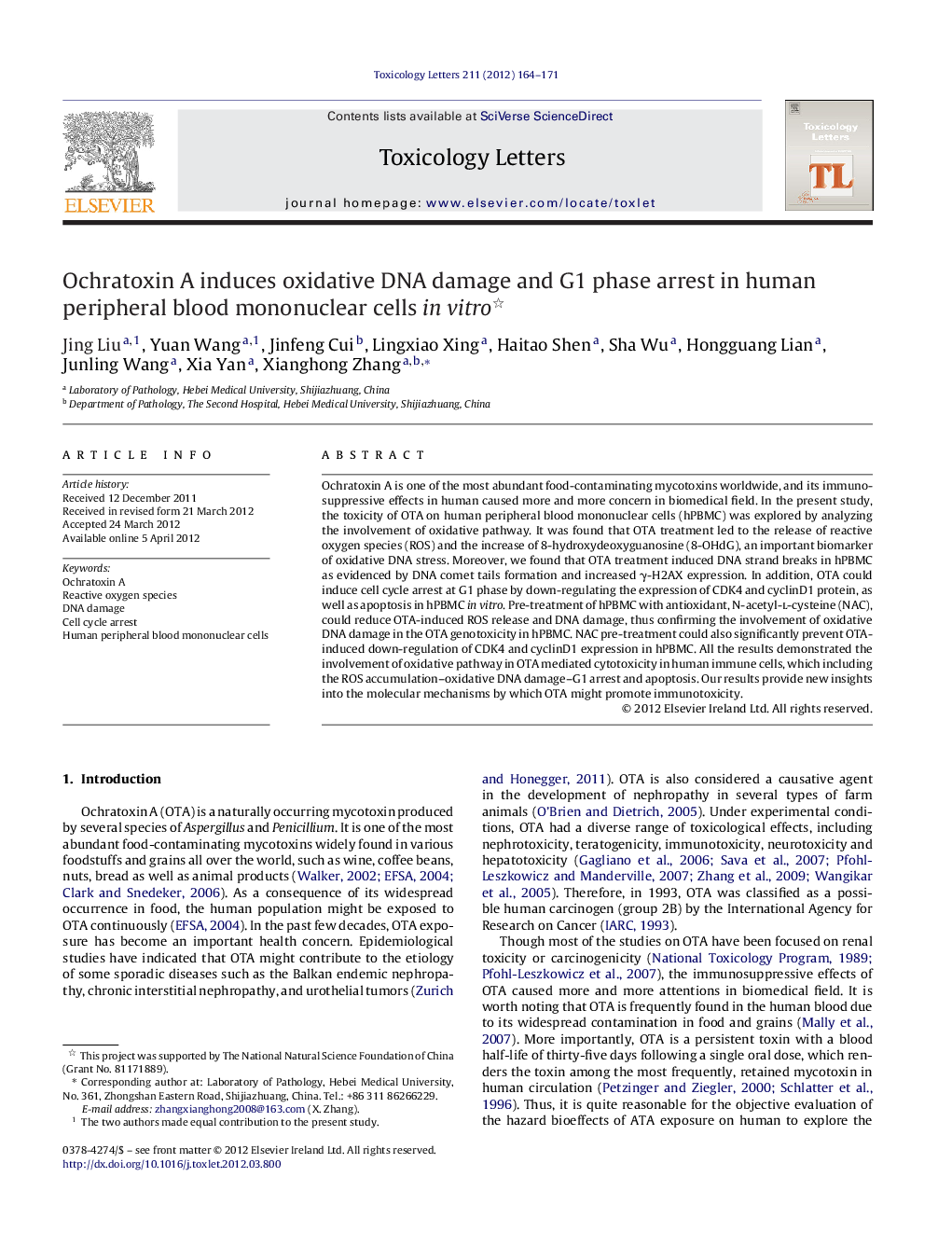| کد مقاله | کد نشریه | سال انتشار | مقاله انگلیسی | نسخه تمام متن |
|---|---|---|---|---|
| 2599587 | 1133219 | 2012 | 8 صفحه PDF | دانلود رایگان |

Ochratoxin A is one of the most abundant food-contaminating mycotoxins worldwide, and its immunosuppressive effects in human caused more and more concern in biomedical field. In the present study, the toxicity of OTA on human peripheral blood mononuclear cells (hPBMC) was explored by analyzing the involvement of oxidative pathway. It was found that OTA treatment led to the release of reactive oxygen species (ROS) and the increase of 8-hydroxydeoxyguanosine (8-OHdG), an important biomarker of oxidative DNA stress. Moreover, we found that OTA treatment induced DNA strand breaks in hPBMC as evidenced by DNA comet tails formation and increased γ-H2AX expression. In addition, OTA could induce cell cycle arrest at G1 phase by down-regulating the expression of CDK4 and cyclinD1 protein, as well as apoptosis in hPBMC in vitro. Pre-treatment of hPBMC with antioxidant, N-acetyl-l-cysteine (NAC), could reduce OTA-induced ROS release and DNA damage, thus confirming the involvement of oxidative DNA damage in the OTA genotoxicity in hPBMC. NAC pre-treatment could also significantly prevent OTA-induced down-regulation of CDK4 and cyclinD1 expression in hPBMC. All the results demonstrated the involvement of oxidative pathway in OTA mediated cytotoxicity in human immune cells, which including the ROS accumulation–oxidative DNA damage–G1 arrest and apoptosis. Our results provide new insights into the molecular mechanisms by which OTA might promote immunotoxicity.
► We performed an analysis on the toxicity of OTA to hPBMC.
► OTA increased 8-OHdG and DNA double-strand breaks in hPBMC via up-regulated ROS.
► OTA induced G1 phase arrest and apoptosis in hPBMC following DNA damage.
► Pre-treatment with NAC reduced OTA-induced DNA damage and the subsequent G1 arrest.
► DNA damage and G1 arrest is involved in immunotoxicity of OTA via up-regulated ROS.
Journal: Toxicology Letters - Volume 211, Issue 2, 1 June 2012, Pages 164–171